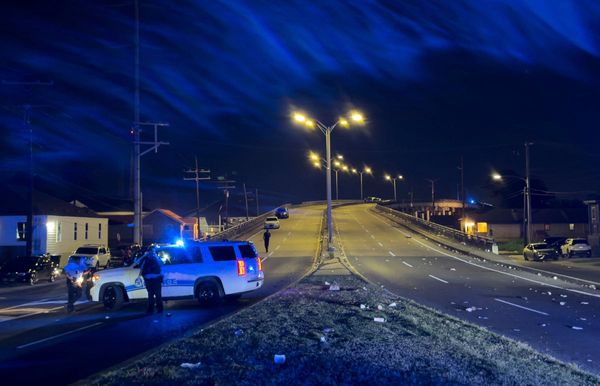
A major study into the effects of cannabis on the human brain is at risk of being partially thwarted because too few black users have agreed to take part.
White people have come forward in large numbers offering to get involved in King’s College London’s £2.5m study of how the drug may contribute to paranoia and psychosis in some users but not others. It is hoped the project will pave the way for wider medicinal use and make illegal recreational use safer.
However attempts to recruit black and Asian people who smoke, vape or eat marijuana have been met with suspicion over how data about illegal drug use will be used and distrust of the establishment.
There has been wider concern about representation of black and minority ethnic people in clinical research in the UK. A study last year into trials of Covid-19 vaccines and therapies found that, despite the disease’s disproportionate impact on ethnic minorities, they were repeatedly underrepresented.
The “Cannabis and Me” trial team has spent 18 months trying to build a 3,000-strong cohort of cannabis users in the London area, including posting on cannabis-dealing hidden market Instagram accounts and advertising on YouTube. But they still need hundreds more black African and Caribbean and Asian people, who, in the words of one recruitment video, “are currently blazing” – slang for smoking marijuana.
Dr Marta Di Forti, an internationally recognised expert in cannabis and psychosis, is leading the study and said it could pave the way for screening “that can make physicians in the UK and across the world more confident, where appropriate, in prescribing cannabis safely”.
It could also allow people who want to keep using cannabis recreationally to check its potential long-term impact on their mental health.
But William Gadsby-Smith, a marketing consultant leading the recruitment drive, said it had been one of the most difficult he has undertaken.
“If you don’t trust the police because of years of racist and corrupt police practices you lump all of the establishment together and it can be easier to say no than yes,” he said.
Attempts to interest the Voice, Britain’s leading black newspaper, in covering the research have so far failed, said Gadsby-Smith.
This week, Unjust, a Brixton-based advocacy organisation that addresses racism in the legal system, said it was declining to help in the recruitment push. Its founding director, Katrina Ffrench, said what she saw as the project’s focus on cannabis and psychosis could result in “policymakers ignoring the harms of prohibition and furthering the criminalisation of black males”. She also said the project team had left it too late to approach Unjust and should have involved it at an earlier stage.
“It feels very extractive,” she said.
Four out of five people being treated for cannabis-induced psychosis at Di Forti’s clinic in south London are from black and minority ethnic backgrounds.
Official data suggests cannabis use may be higher among black people than white and Asian people. In 2014, 14.3% of black men told a government survey they had used illicit drugs of any kind in the previous 12 months, compared with 11.8% of white men. Women from both ethnic groups were less likely to have used drugs but the differential was similar.
The project is the largest of its kind ever undertaken with 2,200 marijuana users already signed up. By combining genetic data with socioeconomic information and psychological analysis, the academics hope to tease out links between a user’s biological makeup, their social circumstances, such as histories of trauma and underlying paranoia relating to gang membership, and the effect cannabis has on them. They will also look at how people take the drug and the strain they use.
But if too few ethnic minority cannabis users take part Di Forti said: “We will end up with findings that only represent the white population and they won’t be generalisable to black British people who therefore won’t be able to benefit from any advances our study leads to.”
The project attempts to build on the 1988 discovery that human bodies produce endocannabinoids. These neurotransmitters latch on to receptors throughout the human body to regulate mood, emotions, perception of pain and inflammation among other things. The active ingredients in cannabis – THC, which produces a psychoactive “high”, and CBD, which relaxes the body – operate on a similar mechanism. They can bind to the existing receptors and unlock similar biochemical processes that manage pain, inflammation and emotional responses.
Di Forti and her team want to find out what determines people’s varying reactions to cannabis: why some become paranoid while others feel relaxed and happy. The hypothesis is that as well as social and other external factors, a person’s DNA may determine what happens when cannabis is metabolised and interacts with the existing cannabinoid receptors.
About 2.5 million 16- to 59-year-olds used cannabis in the year to June 2022, making it the UK’s most popular illegal drug, official data suggests. In 2018, medicinal use of cannabis became legal in the UK with a doctor’s prescription, but remains highly restricted. Legalisation for recreational use, as has happened in more than half of US states, or decriminalisation, as in large parts of South America, Spain, Portugal and the Netherlands does not appear imminent. It is opposed by Labour. The Conservative home secretary, Suella Braverman, wants to make cannabis a class A drug on a par with heroin. The Lib Dems, Green party and the Scottish National party want to decriminalise cannabis for personal use.







